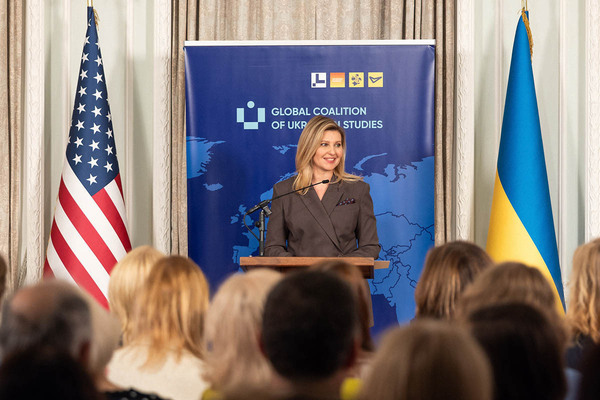A Bog's Life
As Ireland contemplates its energy future, a Notre Dame student works to restore its ecological past.
On a typical gray, rainy day along Ireland’s west coast, Tom Nee leads a group of Notre Dame students around the grounds of his sheep farm along the Killary Fjord. On the far side of the inlet are steep hills, with hints of jagged stone peeking out through a blanket of green. On the near side, the students watch as Nee leads a sheepherding demonstration. He gently vocalizes commands to his sheepdog, Holly, who in turn jogs on either side of the herd, moving and coaxing the animals into the desired position.
When the demonstration is over, Nee guides the group over a gentle incline some 200 yards away, stopping at a small cliff that looks as though it had been chiseled into existence. Layer upon layer of dark matter is exposed beneath the green of the topsoil. As the spongy ground beneath them likely signaled, this is a bog. The near-black soil is peat.
There are peculiar rectangular indentations cut into the earthen wall, and soon Nee shows how those features came to be. He takes a tool known as a slean — a sort of mix between hoe and shovel and post digger — and pushes it into the soil. When Nee draws the slean from the earth, he deposits a rectangular log of peat onto a pile. The logs are stacked by the pit to dry.
Read more here.
Latest International
- University of Notre Dame joins the Global Coalition of Ukrainian StudiesThe University of Notre Dame has joined the Global Coalition of Ukrainian Studies after signing a memorandum of cooperation, formalized Sept. 24, at the Ukrainian Institute of America in New York City. Notre Dame joined four other American institutions that were also publicly welcomed to the coalition at this event: Arizona State University, Columbia University, Manor College and the Shevchenko Scientific Society.
- Statement from University President Rev. Robert A. Dowd, C.S.C., on the anniversary of the atomic bombing of HiroshimaToday, on the anniversary of the bombing of Hiroshima, Father Dowd offered remarks at the Elisabeth University of Music as a guest of its president, Yuji Kawano, and Bishop Alexis Mitsuru Shirahama of Hiroshima. Father Dowd focused on the role that universities can play in addressing the current nuclear predicament and the wider challenges of peace in today’s world.
- Vatican honors Martin and Carmel Naughton with papal awardThe late Pope Francis, in one of his last acts, conferred the honour of the Order of Saint Gregory the Great upon Carmel and Martin Naughton, Trustee Emeritus of the University of Notre Dame. The papal honor is in recognition of the Naughtons’ outstanding philanthropy in the areas of education and the arts, particularly in the provision of philanthropic support and scholarships to Catholic education at the University of Notre Dame and Kylemore Abbey, and in their transformative contributions to higher education in Ireland.
- Prioritizing prenatal care may decrease low birth weight outcomes in The Gambia, Notre Dame research findsA new study co-authored by University of Notre Dame researchers highlights the importance of prenatal care for improving the health of mothers and newborns, providing evidence that can inform policy.
- Navigating the waters of peace: Researchers address challenges, opportunities in implementation of Colombia's Peace AgreementNearly half of the commitments outlined in Colombia's historic peace accord face significant challenges and may not happen in time unless policymakers make several key interventions, warns a new report from Notre Dame's Peace Accords Matrix. The report offers a blueprint to salvage an accord that has lagged behind its implementation deadlines, putting its legacy at risk. It highlights timely fixes that can strengthen the agreement.
- Partial peace deals may facilitate comprehensive accords, offering roadmap for policymakers, practitionersPartial peace agreements — deals that address targeted issues on the way to larger comprehensive accords — could provide a blueprint for peacebuilding policymakers and practitioners, according to new University of Notre Dame research.













